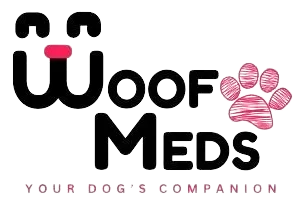The Maltipoo, a hybrid dog breed resulting from the cross between a Maltese and a Poodle (usually a Toy or Miniature Poodle), has rapidly become one of the most popular designer dogs. Known for their adorable appearance, affectionate nature, and intelligence, Maltipoos have won the hearts of dog lovers worldwide. This guide will provide you with everything you need to know about Maltipoo puppies, from their history and characteristics to their care needs and health considerations.
The Origin of Maltipoos
Maltipoos are a relatively recent addition to the world of designer dog breeds, emerging during the late 20th century in North America. Like many designer breeds, Maltipoos were bred to combine the desirable traits of two purebred dogs—in this case, the Maltese and the Poodle.
The Maltese, one of the Maltipoo’s parent breeds, is an ancient toy breed known for its long, silky white coat and gentle, affectionate nature. The Poodle, on the other hand, is celebrated for its intelligence, hypoallergenic coat, and versatility, with a history of being used in various roles, from water retrievers to circus performers. By crossing these two breeds, breeders aimed to create a dog that is not only adorable and small but also intelligent and low-shedding, making them an ideal pet for people with allergies.
Here’s a table summarizing the key characteristics of the Maltipoo breed:
| Characteristic | Description |
|---|---|
| Breed Type | Designer Dog (Crossbreed) |
| Parent Breeds | Maltese and Poodle (Toy or Miniature) |
| Size | Small |
| Weight | 5 to 20 pounds |
| Height | 8 to 14 inches |
| Lifespan | 12 to 15 years |
| Coat Type | Soft, fluffy, can be curly or wavy |
| Coat Colors | White, cream, apricot, brown, black, and various mixes |
| Shedding | Low to non-shedding (hypoallergenic potential) |
| Temperament | Friendly, affectionate, playful, intelligent |
| Exercise Needs | Moderate (daily walks and playtime) |
| Grooming Needs | High (regular brushing, professional grooming every 4 to 6 weeks) |
| Trainability | High (intelligent and eager to please, responds well to positive reinforcement) |
| Good with Children | Yes, generally good with children when properly socialized |
| Good with Other Pets | Yes, usually gets along well with other pets, especially when socialized early |
| Apartment Friendly | Yes, suitable for apartment living due to small size and moderate exercise needs |
| Barking Tendencies | Can be prone to barking, especially if bored or anxious |
| Potential Health Issues | Patellar luxation, progressive retinal atrophy (PRA), dental issues, allergies, white shaker syndrome |
| Dietary Needs | High-quality dog food, portion-controlled to prevent obesity; may have sensitivities requiring specific diet |
| Special Considerations | Prone to separation anxiety if left alone for long periods; regular mental stimulation and companionship are important to prevent destructive behaviors |



Physical Characteristics of Maltipoo Puppies
One of the most charming aspects of Maltipoo puppies is their appearance. These dogs typically weigh between 5 to 20 pounds and stand around 8 to 14 inches tall, depending on whether their Poodle parent was a Toy or Miniature. Maltipoos have a soft, fluffy coat that can be curly, wavy, or somewhere in between, with coat colors ranging from white and cream to apricot, brown, and black.
Their round, expressive eyes, button-like nose, and floppy ears give Maltipoos an almost teddy bear-like appearance, which only adds to their charm. It’s important to note that, as a hybrid breed, Maltipoo puppies can vary significantly in appearance even within the same litter. Their coats are often touted as hypoallergenic, which means they shed less than many other breeds, though no dog is completely hypoallergenic.
Maltipoo Temperament: What to Expect
Maltipoos are known for their sweet, friendly, and affectionate temperament. They tend to be very people-oriented dogs, often forming strong bonds with their owners and thriving on human companionship. This makes them excellent family pets, as they are typically good with children, seniors, and other pets.
However, Maltipoos are also known for their energy and playfulness. They love to play games, go on walks, and engage in activities that challenge their intelligence, such as puzzle toys or obedience training. Despite their playful nature, Maltipoos are also known for their adaptability. They are just as happy lounging on the couch as they are playing in the yard, making them suitable for both active and more relaxed households.
It’s important to note that Maltipoos can suffer from separation anxiety if left alone for long periods, as they are very attached to their owners. This can lead to behaviors such as excessive barking, chewing, or digging. Therefore, they are best suited for households where someone is often home or for owners who can invest in doggy daycare or pet-sitting services.
Training Your Maltipoo Puppy
Training a Maltipoo puppy is usually a rewarding experience, thanks to their high intelligence and eagerness to please. Poodles are ranked among the smartest dog breeds, and Maltese dogs are known for their quick learning abilities, so it’s no surprise that Maltipoos inherit these traits.
Positive reinforcement methods, such as treats, praise, and play, work best with this breed. Maltipoos respond well to consistency and patience in training, and early socialization is crucial to ensure they grow into well-rounded adults. Exposing your Maltipoo puppy to a variety of people, places, and experiences at a young age will help them develop into a confident and sociable dog.
House training a Maltipoo can be challenging, as smaller breeds tend to have smaller bladders, which means they need to go outside more frequently. Crate training and a regular schedule can be very effective in this regard. Enrolling your Maltipoo in puppy obedience classes can also provide them with valuable socialization opportunities and reinforce good behavior.
Exercise and Play for Maltipoo Puppies
Despite their small size, Maltipoos are quite energetic and require regular exercise to stay happy and healthy. A daily walk, combined with playtime and mental stimulation, is usually sufficient to meet their exercise needs. Because they are small, Maltipoos are well-suited for apartment living, but they still need space to run and play, whether it’s a backyard or a local park.
Interactive toys, puzzle feeders, and games like fetch or hide-and-seek can keep a Maltipoo mentally stimulated and physically active. Regular playtime not only helps burn off excess energy but also strengthens the bond between you and your puppy.
Grooming Needs of Maltipoos
One of the appealing aspects of the Maltipoo is its coat, which is often low-shedding and hypoallergenic. However, this coat does require regular grooming to keep it in good condition. Depending on the coat type—whether it’s more curly like a Poodle’s or silky like a Maltese’s—Maltipoos need to be brushed several times a week to prevent matting and tangles.
Regular grooming sessions should include brushing, checking for mats, cleaning the ears, and trimming the nails. Maltipoos are also prone to tear staining around the eyes, especially if they have a lighter coat, so it’s important to clean the area regularly.
Many Maltipoo owners opt to take their dogs to a professional groomer every 4 to 6 weeks for a trim and bath. This helps maintain the coat and keeps the dog looking neat and tidy. Additionally, dental care is essential for Maltipoos, as small breeds are more prone to dental issues. Regular tooth brushing and professional cleanings can help prevent problems like gum disease and tooth loss.
Health Considerations for Maltipoo Puppies
As with any breed, Maltipoos can be prone to certain health issues. While crossbreeds like the Maltipoo can benefit from hybrid vigor, which may reduce the likelihood of inherited diseases, they can still inherit health problems from either parent breed.
Some common health issues that Maltipoos may face include:
- Patellar Luxation: This condition, common in small dogs, occurs when the kneecap dislocates from its normal position. It can cause discomfort and mobility issues.
- Progressive Retinal Atrophy (PRA): A group of genetic disorders that lead to the gradual degeneration of the retina, eventually causing blindness.
- White Shaker Syndrome: This condition causes tremors in small dog breeds, including Maltipoos. While it can be alarming, it is usually manageable with medication.
- Dental Issues: As mentioned earlier, Maltipoos are prone to dental problems due to their small mouths. Regular dental care is essential.
- Allergies: Maltipoos can be prone to skin allergies, which can cause itching, redness, and discomfort. These allergies can be triggered by food, environmental factors, or grooming products.
To ensure the health of your Maltipoo, it’s important to work with a reputable breeder who tests their breeding dogs for common genetic conditions. Regular veterinary check-ups, a balanced diet, and proper grooming can also help keep your Maltipoo in good health.
Feeding Your Maltipoo Puppy
Proper nutrition is crucial for your Maltipoo puppy’s growth and overall well-being. Maltipoos should be fed high-quality dog food that meets their nutritional needs, taking into account their age, size, and activity level.
Puppies typically need to be fed three to four times a day, while adults can usually be fed twice a day. It’s important to monitor their weight and adjust their food intake accordingly, as Maltipoos can be prone to obesity, especially if they do not get enough exercise.
When choosing a dog food, look for one with high-quality protein as the first ingredient, and avoid foods with artificial additives, fillers, and by-products. Some Maltipoos may have food sensitivities, so you may need to experiment with different foods to find one that suits your puppy’s needs.
Treats can be a great tool for training, but they should be given in moderation to prevent weight gain. Opt for healthy, low-calorie treats and avoid giving your Maltipoo human food, which can be harmful to dogs.
Socialization and Bonding
Socialization is a critical part of raising a well-adjusted Maltipoo. Early exposure to different environments, people, and other animals will help your puppy grow into a confident and friendly adult dog. Maltipoos are generally good with children and other pets, but early socialization will reinforce these positive traits.
Puppy socialization classes, trips to the park, and playdates with other dogs are excellent ways to help your Maltipoo develop social skills. Additionally, introducing your puppy to different sounds, sights, and experiences in a controlled and positive way will reduce the likelihood of fearfulness or anxiety later in life.
Bonding with your Maltipoo is also important. These dogs thrive on human interaction and love being close to their owners. Spend quality time with your Maltipoo through play, training, and cuddling to strengthen your bond. A well-bonded Maltipoo is a happy Maltipoo, and they will be more responsive to training and more likely to exhibit good behavior.
The Joy of Owning a Maltipoo
Maltipoos are more than just adorable little dogs—they are loving companions who bring joy and happiness to their owners’ lives. Their small size, combined with their big personalities, makes them ideal pets for a variety of living situations, from apartments to houses with yards. Their friendly, affectionate nature makes them great for families, singles, and seniors alike.
One of the biggest joys of owning a Maltipoo is their versatility. Whether you want a playful companion to join you on adventures or a cuddly lap dog to keep you company at home, a Maltipoo can fit the bill. They are adaptable, easy to train, and generally get along well with everyone they meet.
In return for the love and care you provide, a Maltipoo will offer you unconditional love, loyalty, and companionship. These dogs have a way of becoming an integral part of your life, and the bond you form with your Maltipoo will be one of the most rewarding aspects of owning this breed.
Conclusion: Is a Maltipoo Right for You?
Maltipoos are a wonderful choice for dog lovers who want a small, affectionate, and intelligent companion. They are suitable for a wide range of households and adapt well to different living environments. However, like all dogs, Maltipoos require time, attention, and care. Potential owners should be prepared for the grooming, exercise, and training needs of this breed.
If you’re looking for a loving, playful, and loyal pet, a Maltipoo might just be the perfect fit for you. With their charming looks and delightful personalities, Maltipoos have a way of stealing hearts and becoming cherished members of the family.
In conclusion, owning a Maltipoo is a rewarding experience filled with love, joy, and plenty of adorable moments. Whether you’re a first-time dog owner or an experienced pet parent, a Maltipoo can bring a special kind of happiness into your life.


